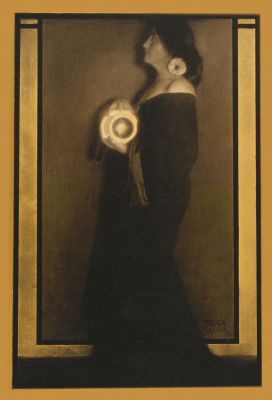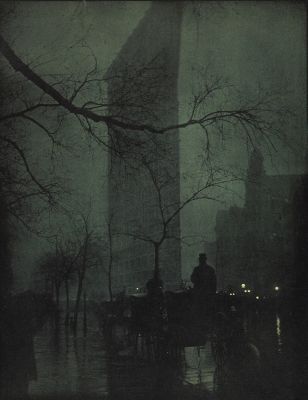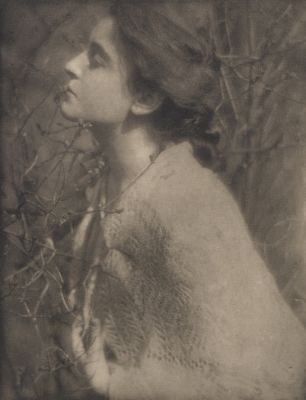
Title
The Little Round MirrorArtist
Steichen, Edward (American, 1879-1973)Publication
Camera Work XIVDate
1906Process
PhotogravureAtelier
Manhattan Photogravure Company, NYImage Size
21.3 x 14.1 cm
Steichen met Stieglitz in New York in 1900, when Steichen was on his way to Europe, and Stieglitz purchased several landscapes from him. Shortly thereafter Steichen turned to quite a different artistic problem-the nude. He quickly adopted stylizations that became his hallmark: the light female figure, her face obscured, emerging from a dark void; and a single prop, such as a mirror, vase, or flower, that was nearly invisible but frequently supplied in the title. Steichen may have abandoned his nudes after they were severely criticized by George Bernard Shaw. Shaw wrote: "Steichen’s life studies look as though they were taken in coal cellars. He starts with brown, and gets no further than brown, and the parts of his figures which are obscured by darkness… suddenly become indistinct and insubstantial in a quite unconvincing and unreasonable way." Shaw, who hated any kind of manipulation of the photograph, was probably offended by Steichen’s unorthodox methods. [1]
Reproduced / Exhibited
Hopkinson, Tom. Treasures of the Royal Photographic Society 1839-1919. London, 1980. p. 165
Kruse, Margret. Kunstphotographie Um 1900: D. Sammlung Ernst Juhl; Hamburg: Museum für Kunst u. Gewerbe, 1989 pl. 862
Steichen, Joanna, and Steichen. Steichen’s Legacy, Photographs, 1895-1973: With Text by Joanna Steichen. New York: Alfred A Knopf, 2000 pl 120
References
[1] The Metropolitan Museum of Art Bulletin. Spring 1978










